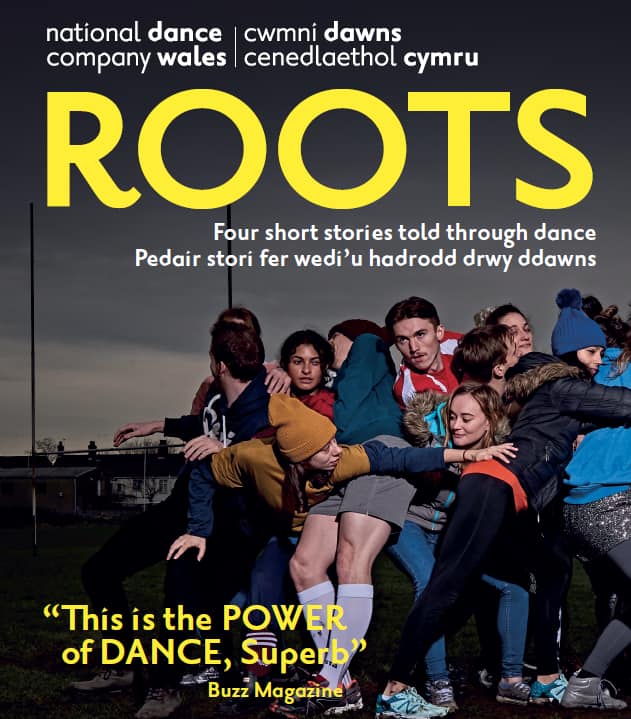
Roots is an engaging, diverse, and emotional production that marries Welshness with contemporary dance and gives life to art that is accessible without compromise on quality. Roots is the biannual production by the National Dance Company that brings dance to audiences around the world and around Wales. It makes its way into venues with little technical equipment and space, in towns and villages around Wales, to bring dance to new audiences. Roots succeeds equally in introducing new audiences to dance and in delighting dance enthusiasts.
This year’s production features four very different pieces from four choreographers at different stages in their career and artistic maturity. Écrit, choreographed and performed by Nikita Goile is an emotional dance recounting a conflictual love relationship executed beautifully. Goile, a budding choreographer, combines an elaborate work of hands, inspired by Indian Bharata Natyam dance, with her lover’s silouette behind a curtain, and a more traditional duet form. It is effective in conveying the power imbalance between the two lovers, the hurt, and the closeness. The only weakness of the piece comes from its inspiration: the letters of Frida Kahlo to Diego Rivera. Although they both had other lovers, Kahlo suffered from Rivera’s numerous affairs. In Écrit, Goile’s graceful and gentle movements do not capture the intensity of Kahlo. Having suffered from polio, Kahlo had very weak legs, underwent many surgeries, and had miscarriages. Kahlo’s suffering body was the source of her art and Kahlo used her body to reinterpret her Mexicanidad. Écrit is at its strongest when Kahlo is forgotten and Goile is herself. Goile conveys a nuanced fragility, which contrasts with the powerful gestures and movements of Moronfoluwa Odimayo as her dominating lover. It is effective and moving.
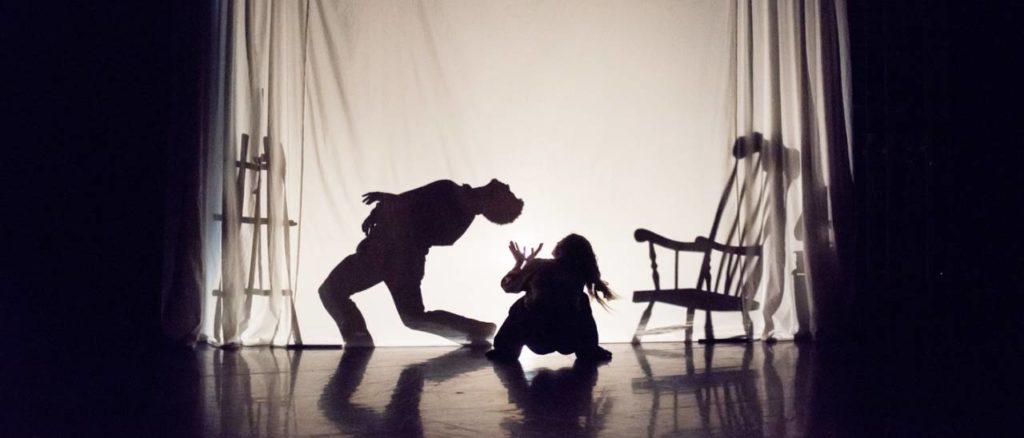
The second piece, Why Are People Clapping? is also by a new choreographer, Ed Myhill. It is an entertaining and funny piece that conveys the joy of dancing to the rhythm of elaborate clapping. In contrasts with the intimate piece Écrit, Myhill’s Why Are People Clapping? plays to the audience and for the audience. It begins with a tennis match with no actual balls or rackets, conveyed by only a single clap and well-timed movement. It is all so well tuned that you can almost see the ball hit the racket. The piece includes dancers in a semicircle taking turns to do and enjoy a solo to Steve Reich’s clapping music, followed by claps that bring order and dictate action, a catwalk, and a run through as many facial expressions as possible. I would have liked the tennis players in 1970s headbands and wristbands for a replay of Borg v. McEnroe, but Clapping oozes fun anyway.
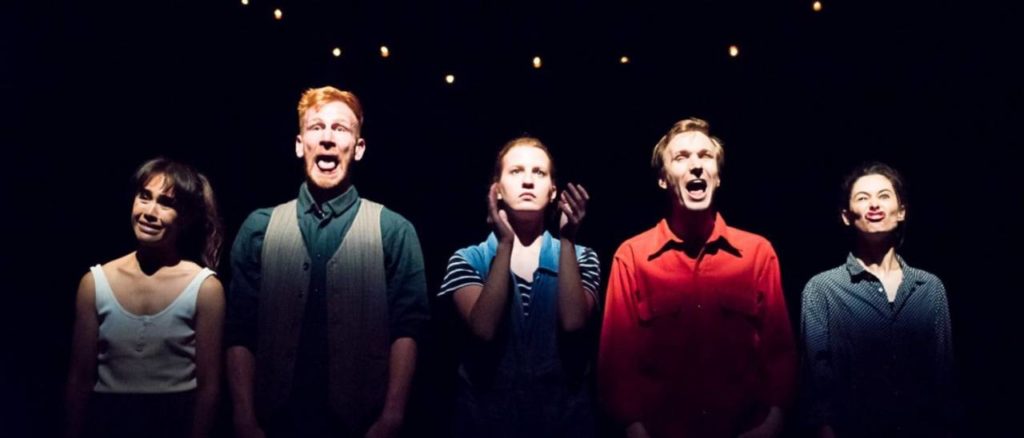
The third piece, Codi (rise up) is by emerging choreographer Anthony Matsena, who is finding his voice in a socially and politically aware dance infused with energy. Codi takes the audience underground, into the mines of the Welsh Valleys. There is a sense of suffocation, isolation, struggle, and helplessness. The small headtorches the dancers wear around their necks are used effectively to convey the darkness of suffering, of perishing, of being forgotten. Then, they rise up. They beat wooden rods to the ground and the energy rushes through the body. There is power in being together. Together, we can rise up. When I interviewed Matsena, he told me that once you recover, you still have the past hurt with you, like a ‘stain on the shirt.’ With soot on their clothes and faces, the dancers face the audience calling for attention. The past is not forgotten; it is there to give strength and purpose.
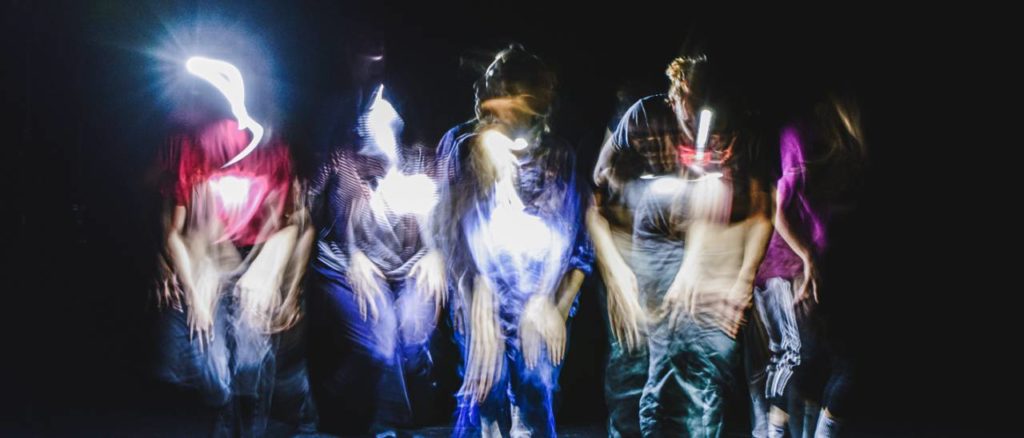
Roots concludes with the longer piece Rygbi. Annwyl i mi, by Fearghus Ó Conchúir, the Artistic Director of NDC Wales. Rygbi captures the passion and synergy of players and fans of the game, which ripple across the whole of society in Wales. It is the national game that takes over cities altering time, colouring the pavements with people in red shirts, and getting us stuck in traffic. Rygbi does not borrow movements from the game, it extracts the essence of rugby and gives it a new form. The piece alternates duets, ensembles, and solos to guide us through effort, injuries, fatigue, hopes, victories, and defeats. The dancers-players touch one another and in that touch is being part of a whole, something bigger than oneself, that is made of each one’s individuality. Dancers, like players, rely on one another, know what the other can do, is likely to do, the other’s weaknesses and strengths. Like players, they create together. Rygbi is elegant and strong. It is a painting and it is theatre. Ó Conchúir takes us onto the pitch with colour, movement, and music. He makes us breathe the tension of the competition, feel the strain of the muscles, and sense the elation of victory. Rygbi uses the language of dance expertly to tap into our emotions, thoughts, and ideals, and creates a moment of shared passion and commitment.
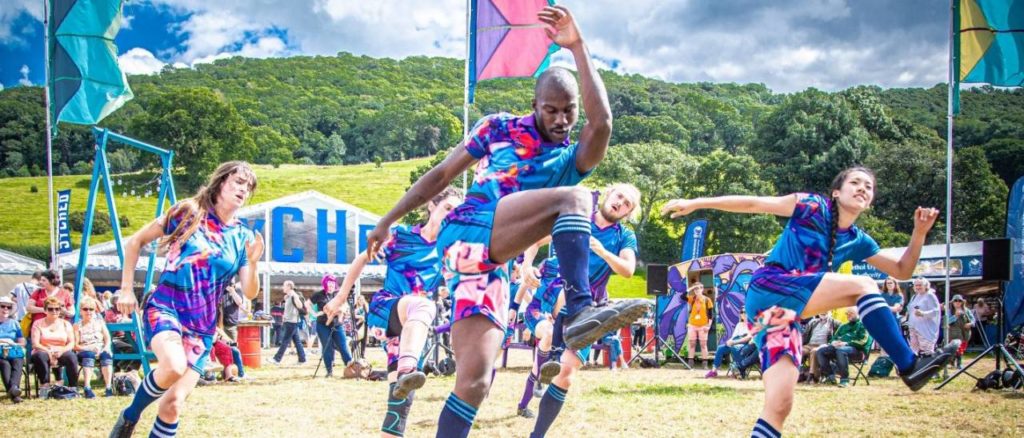
Roots is currently on tour. More information can be found here.
